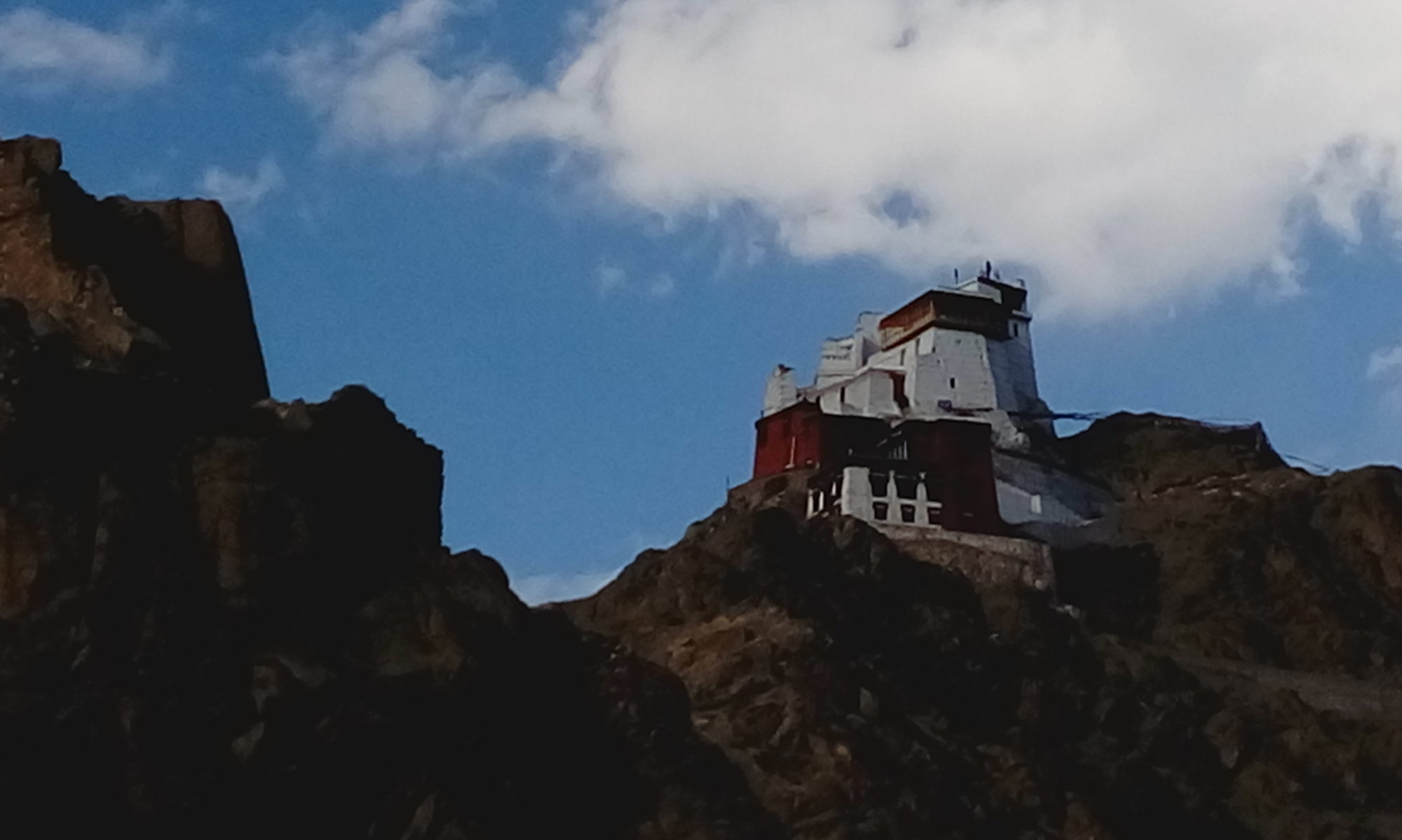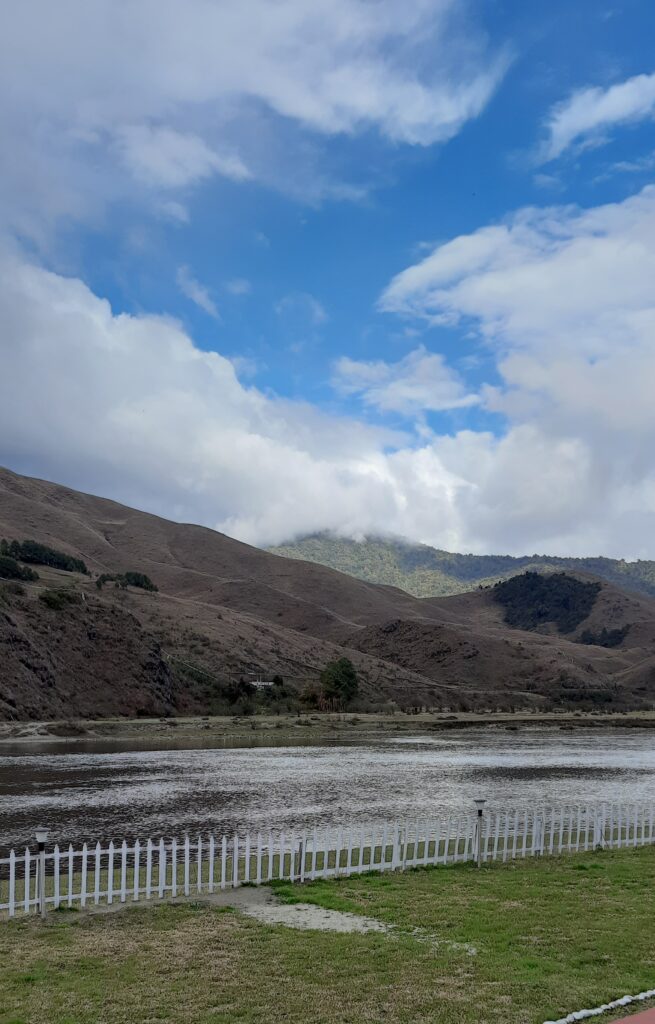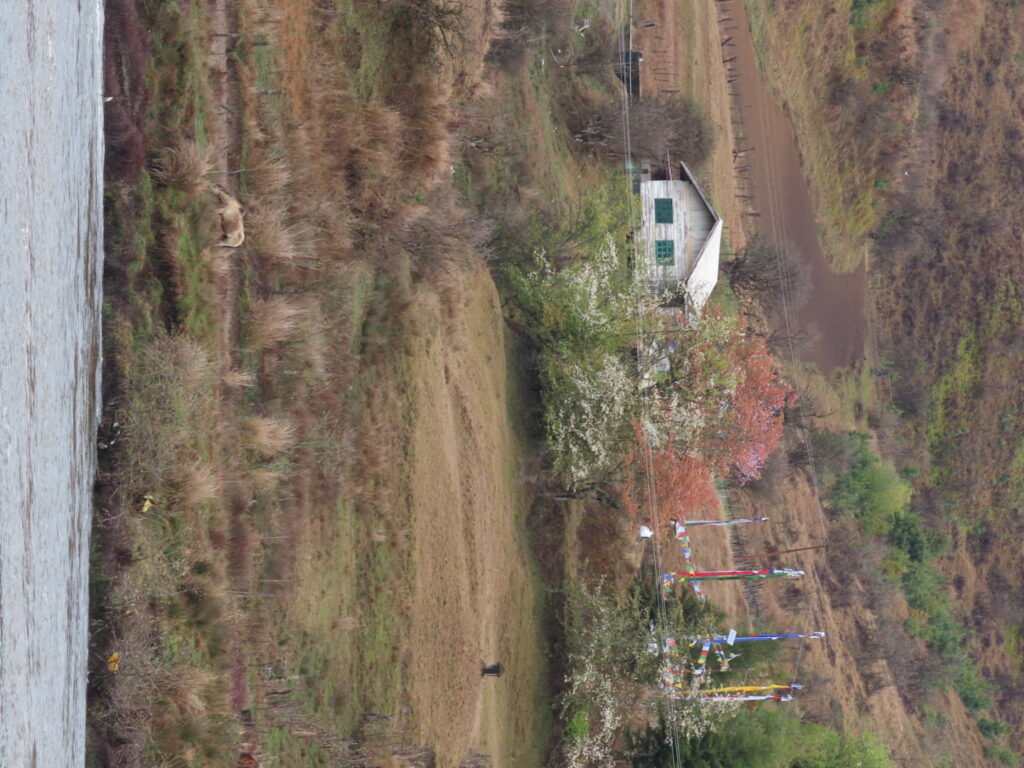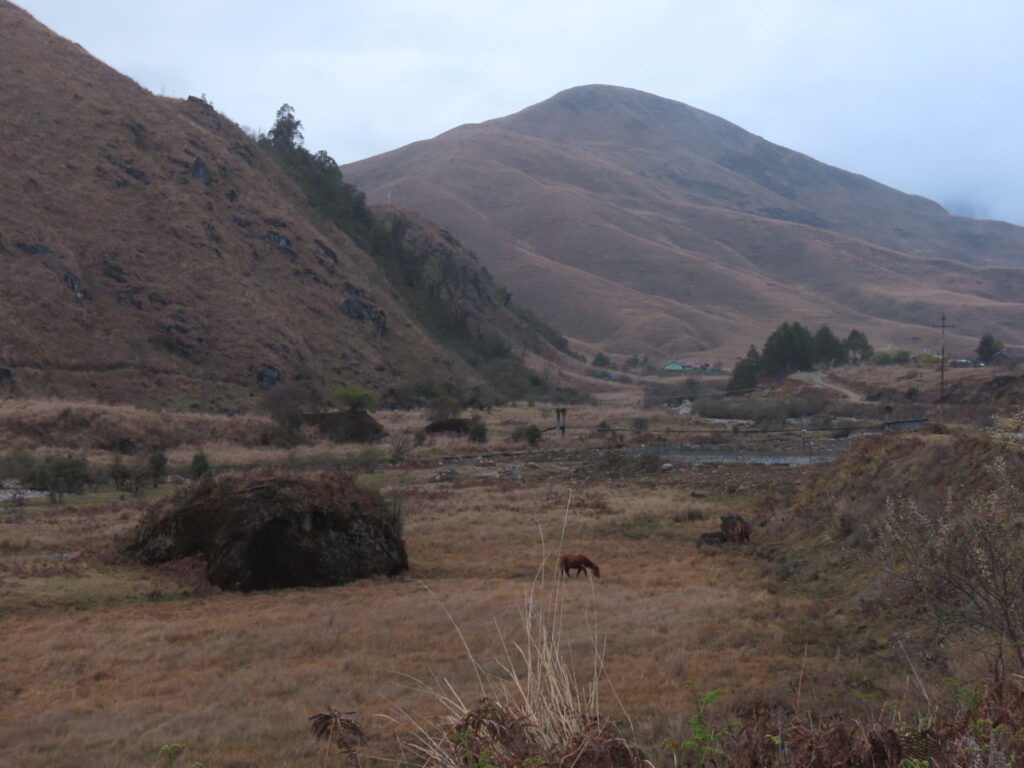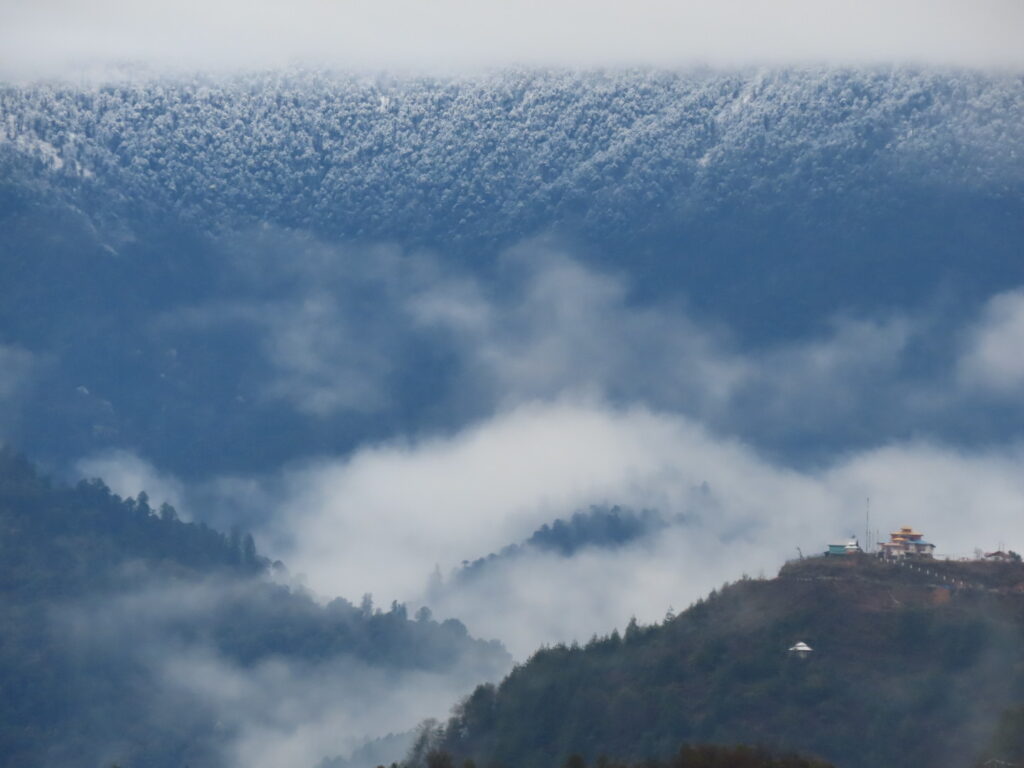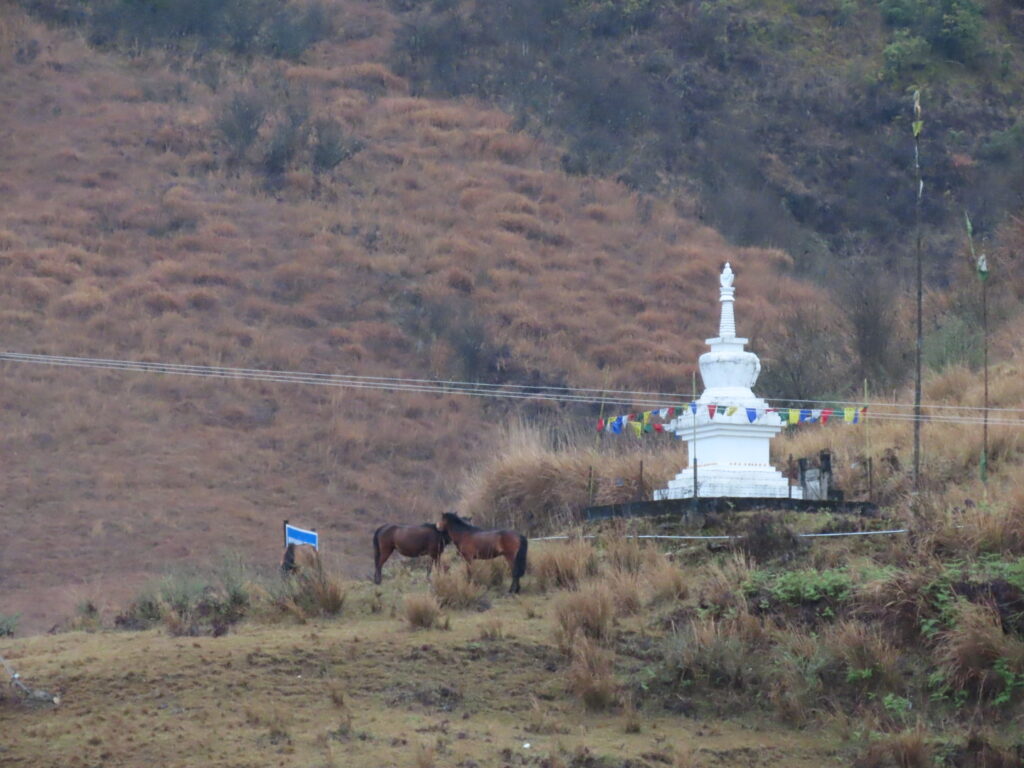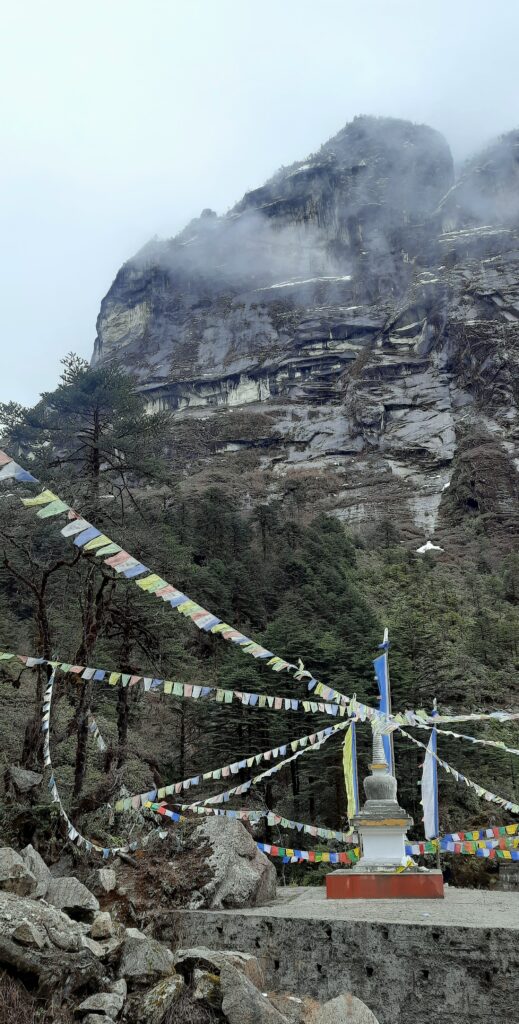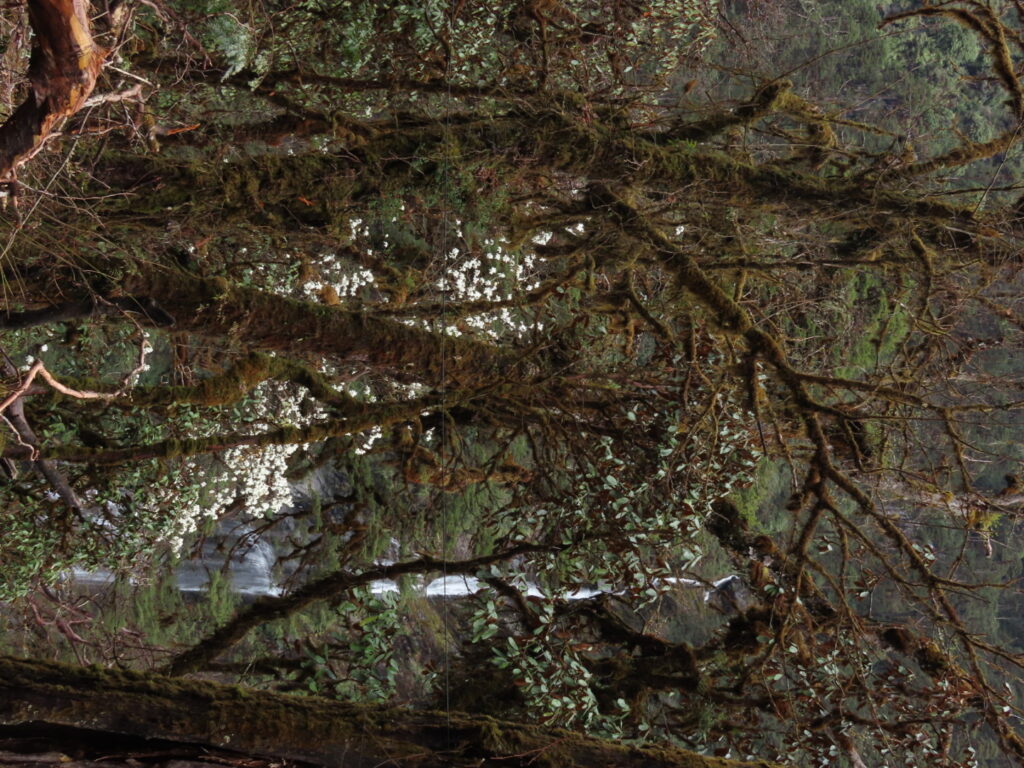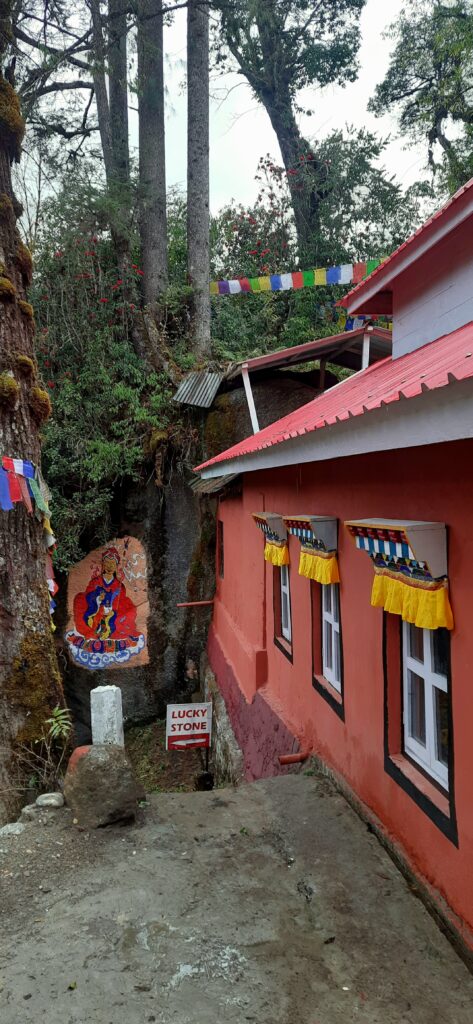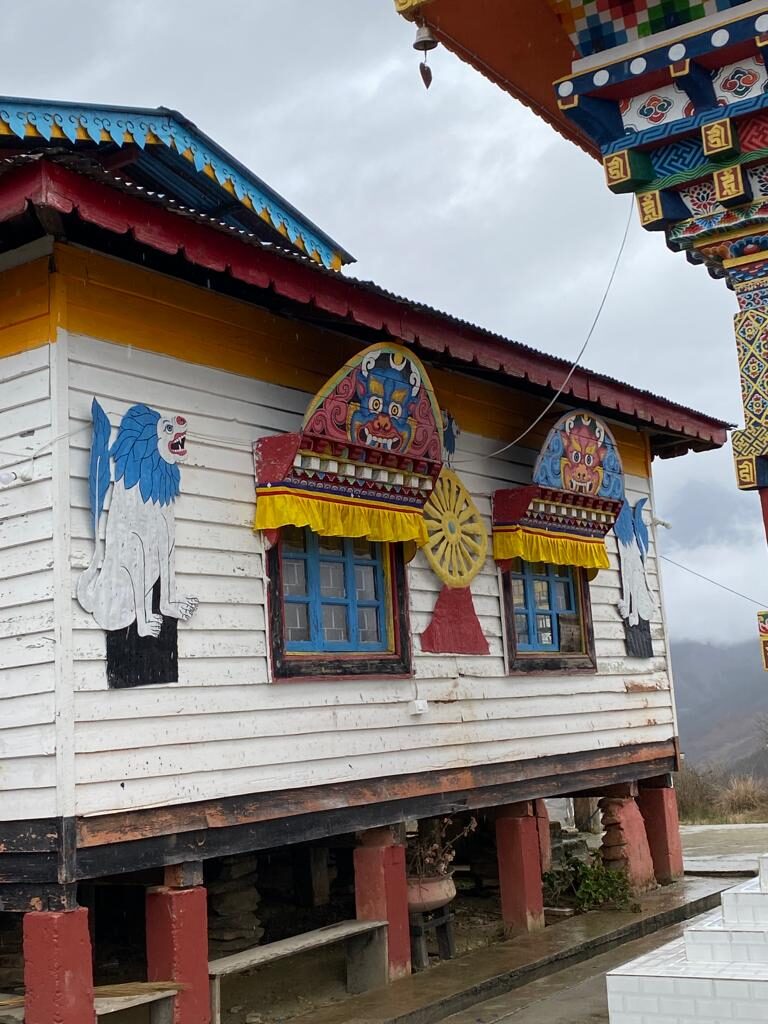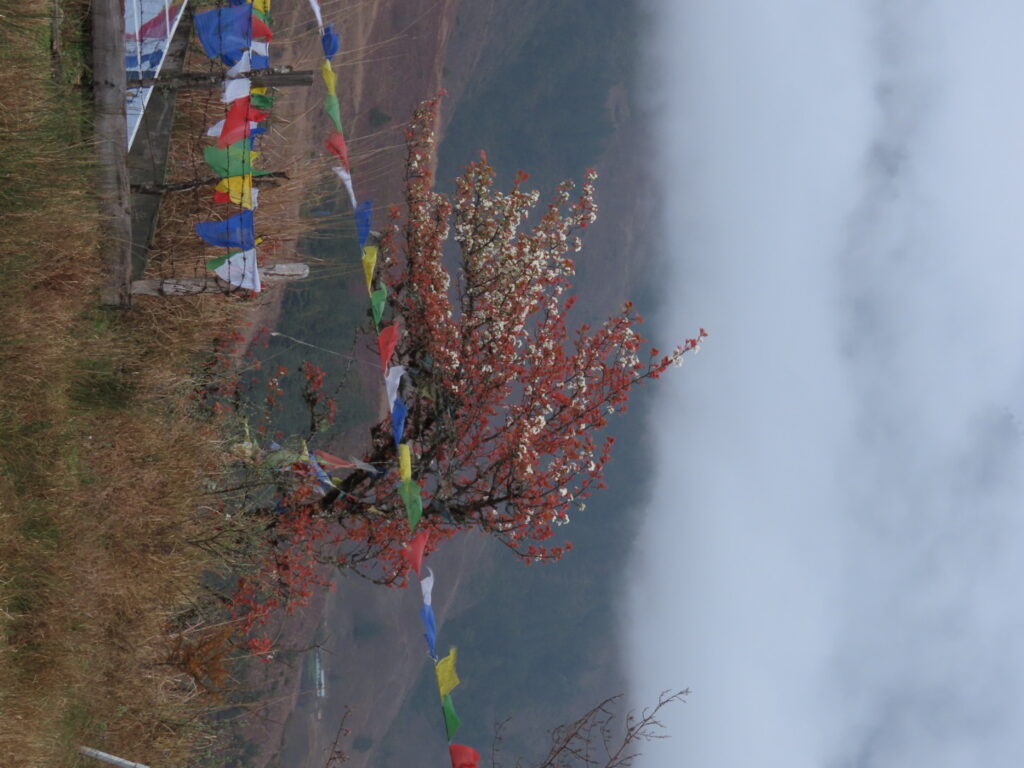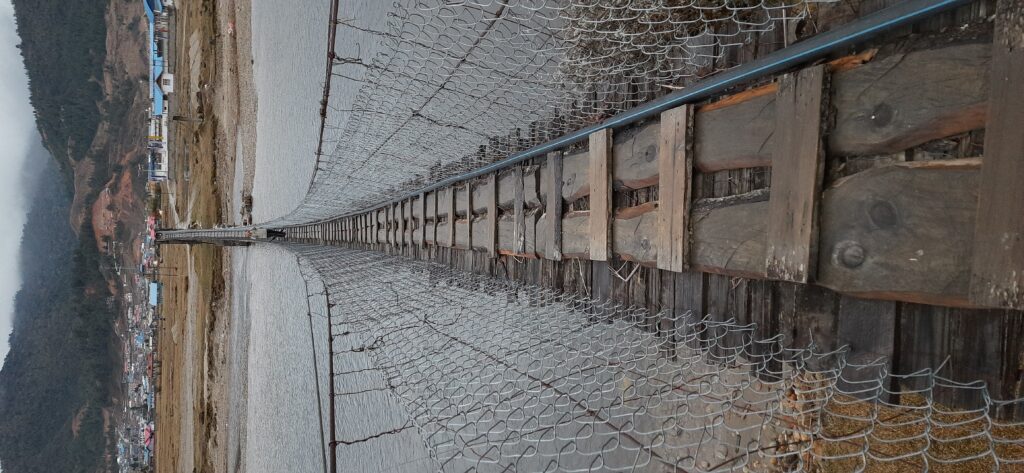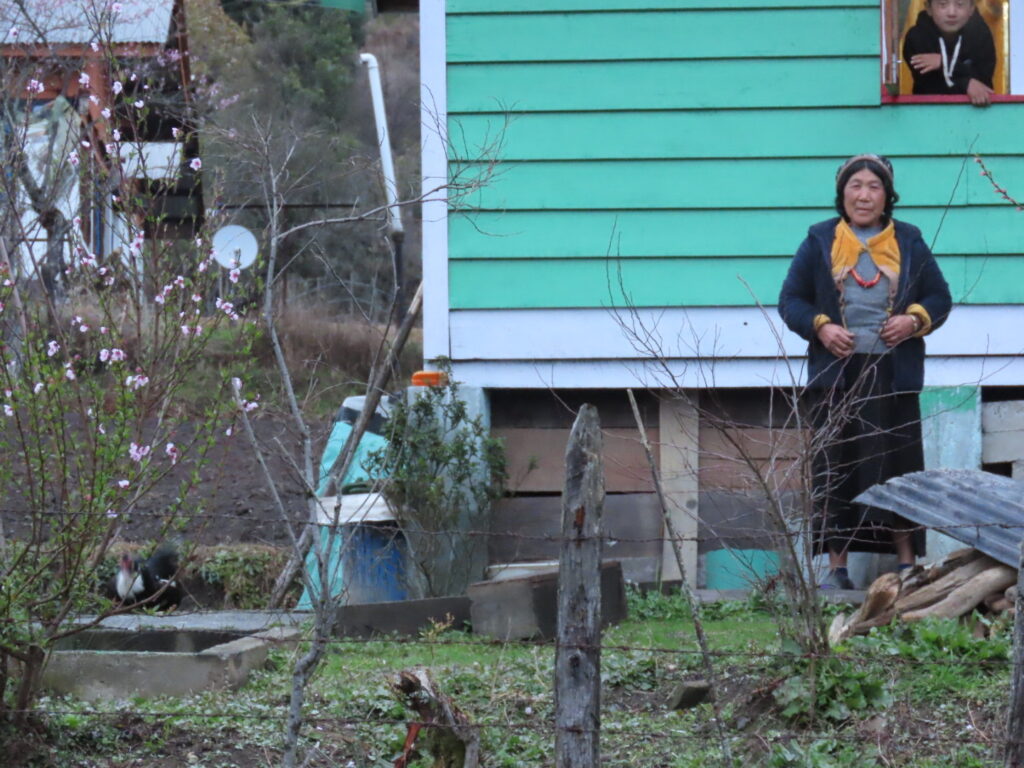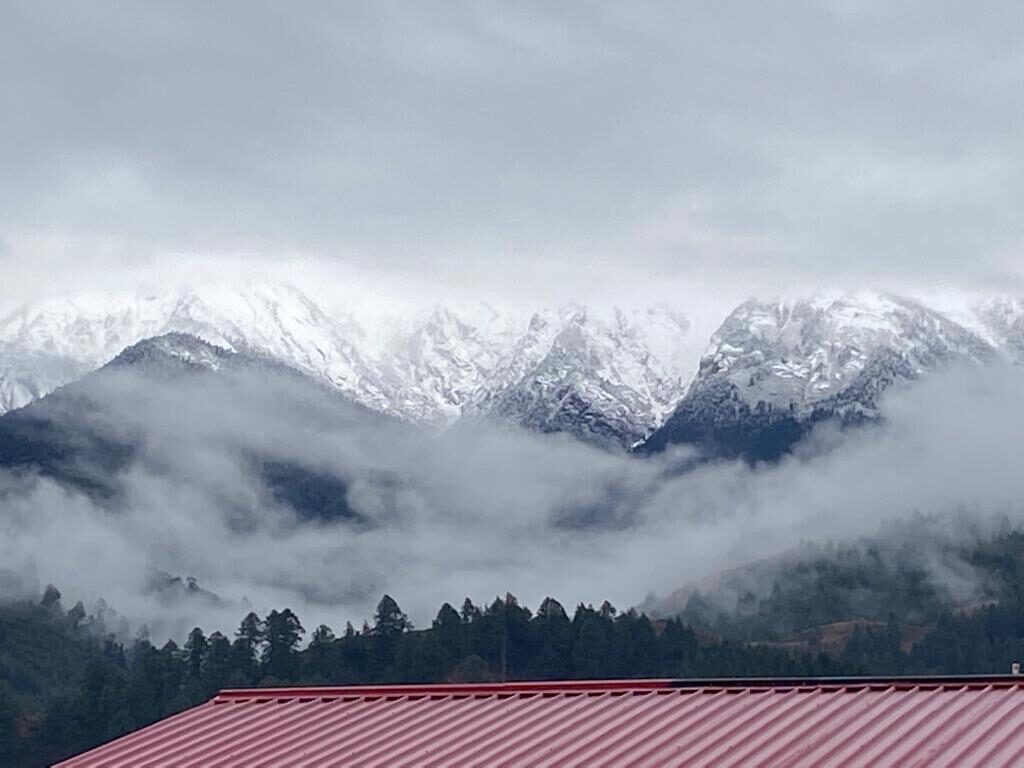Loud woops suddenly rend the air as we climb towards Mayodia pass. As I jump from the vehicle with the camera the driver, as excited as me, says ‘van manush’, literally tree man or ape. A Hoolock gibbon! Through the thick greenery I spy a black shape swing adeptly on the vines draped across the trees. The call is returned from above the road. In the end though, all I get is a blurry shot of a black face and the unmistakable white brows! (soon enough there was an opportunity to be within touching distance of one…another story for another time) We are off to a good start into the folds of Arunachal again.
Read-Along the Lohit on the Long Road to Walong
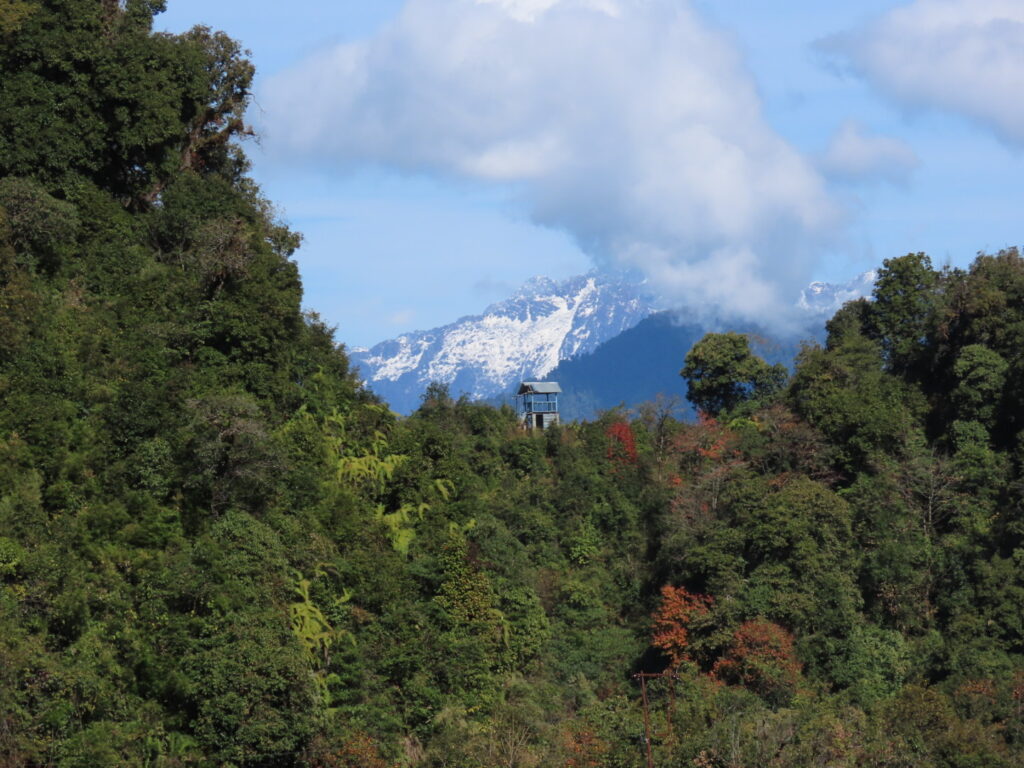
Gateway to Heaven
Anini, deep inside the Dibang Valley, home to the Idu Mishmis, has been on the itinerary for months but the year and the season are coming to a close when we cross the Dhola Sadiya bridge over bleached sandbanks of a drying Lohit. Past mustard fields a mellow yellow green and silver tinged bullrushes.
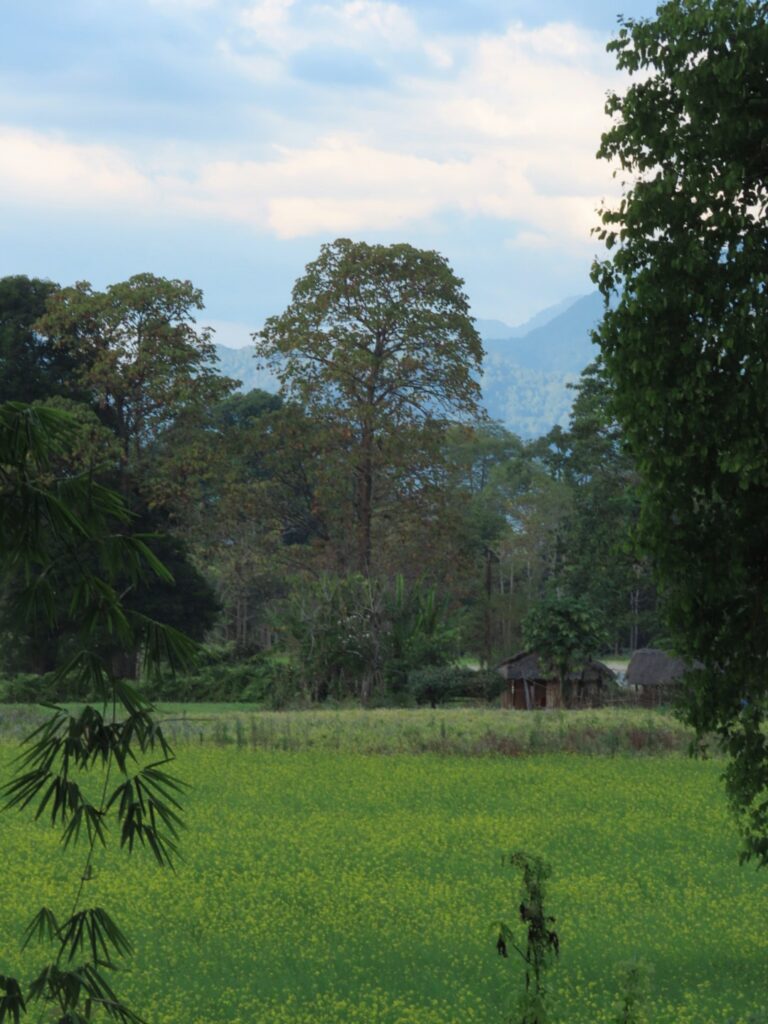
In Roing, the Christmas stars are off the shop shelves and on the neat houses lining the road. We climb an invisible road to Mayodia pass, the go-to-place in winter for snow for the Assamese around. It is well camouflaged by the thick foliage as it snakes up the mountain. On one hand of the pass the Lohit, Dibang and Siang merge in the hazy horizon to form the mighty Brahmaputra and on the other extend snow capped ranges and deep valleys like crumpled paper till Andra La on the northern border with Tibet and somewhere in Upper Dibang lies the lost Pemako, the ‘promised land’ of the Tibetans. Into this remote fecund land we descend after a perfunctory stop to take in the clouds flowing down like water over densely forested ranges.
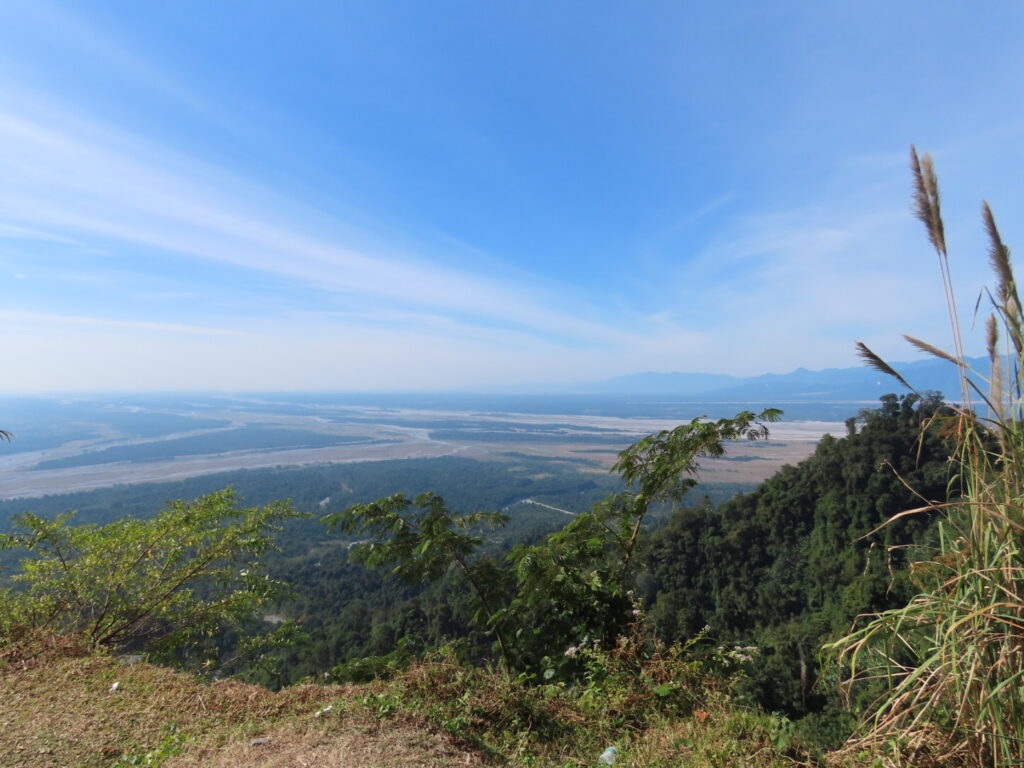
The village of Hunli is visible at the bottom on a shoulder seemingly in a face-off with drawing book mountain rising from the depths with its arms outstretched, every inch covered in thick forest. At Hunli we nearly take off towards Hayuliang on a shiny new road since there is almost no signage pointing towards Anini. It is a long drive into the crumpled ranges along the Dibang. By the time we reach Anini, Orion the Hunter is rising and has one boot on a peak and his belt looks like a three star tower. So close to the clear heavens!
Tall Mountains and Towering Falls
Anini sits on a plateau at the confluence of two rivers draining two valleys. Dri, the picturesque Angrim valley and Mathun, a narrower namesake. It is a small town and a district headquarter. After a night in near freezing temperature, it is an early start into the Angrim Valley under a slightly dour sky. A sparkling Dri keeps company, mostly skipping and rushing over boulders, at places resting calmly in crystal-clear emerald pools cradling sunken logs and fish.
Another river tale is- Barot And the Serendipitous Catch in the Uhl River
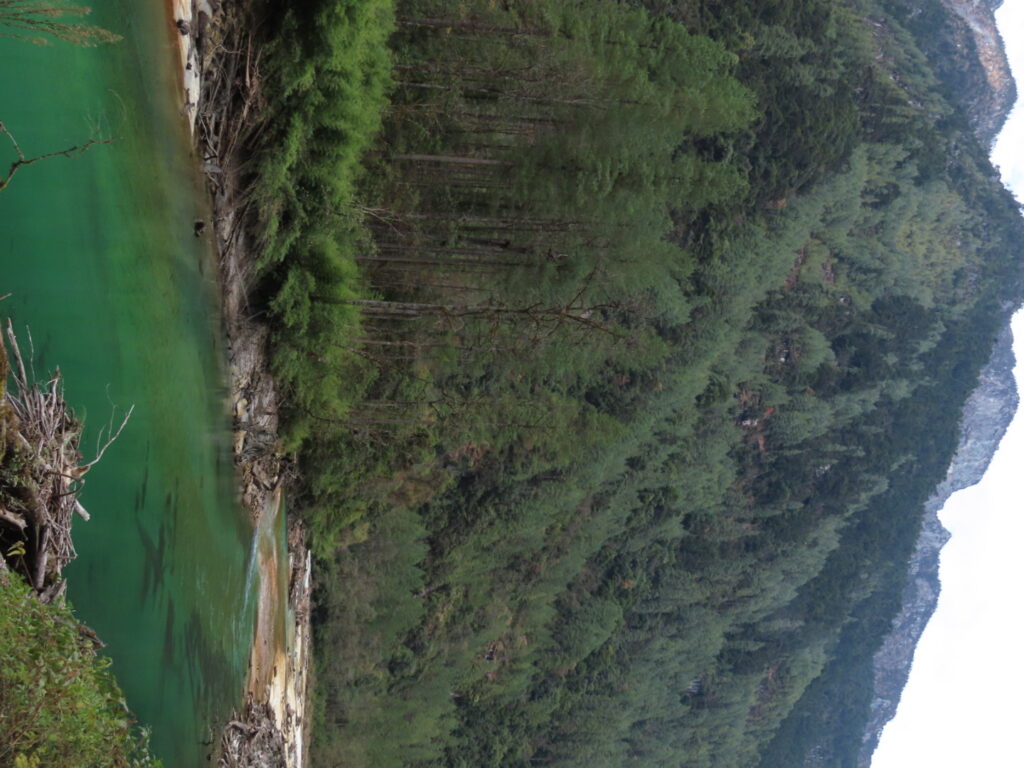
The valley rises gently and after Acheso village it widens into a rolling meadow of copper ferns. One can only imagine the greenscape it would be post monsoon. Soon we are deep inside the Dibang Wildlife sanctuary. Waterfalls dot the mountains as the valley narrows and we reach the Insta famous Chigu resort on a massive sandbar. A healthy respect for rivers in the mountains and the need to keep them at a distance is so ingrained that being on a river bed is a little disconcerting. After the customary photographs (it is quite a picture with the wooden and red roofed alpine huts on wooden platforms with the towering Chigu Falls and snow peaks as backdrop) we head for the Mawu Aando Falls.
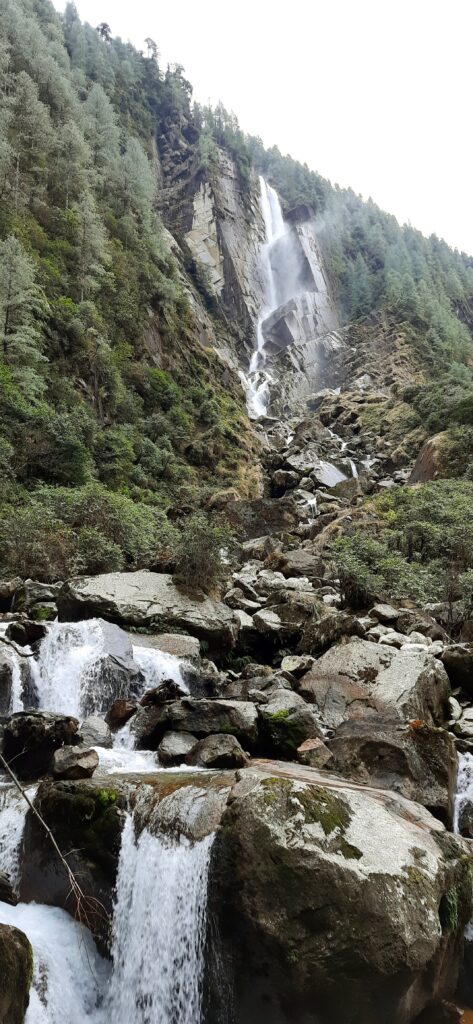
The short walk to it is a teaser of what hiking in these parts would be like. Walking on fallen mossy logs, climbing root steps takes us to a waterfall where the mountain looks like it has been chiselled precisely and at perfect angles by a machine. A thoughtfully made wooden platform and a low bench faces the water flying of the rockface. A place to meditate! Back on the road the drive ends abruptly a little beyond Brueni. There is only a wild forest of towering pines and boulders but soon it will give way to man and his machines.
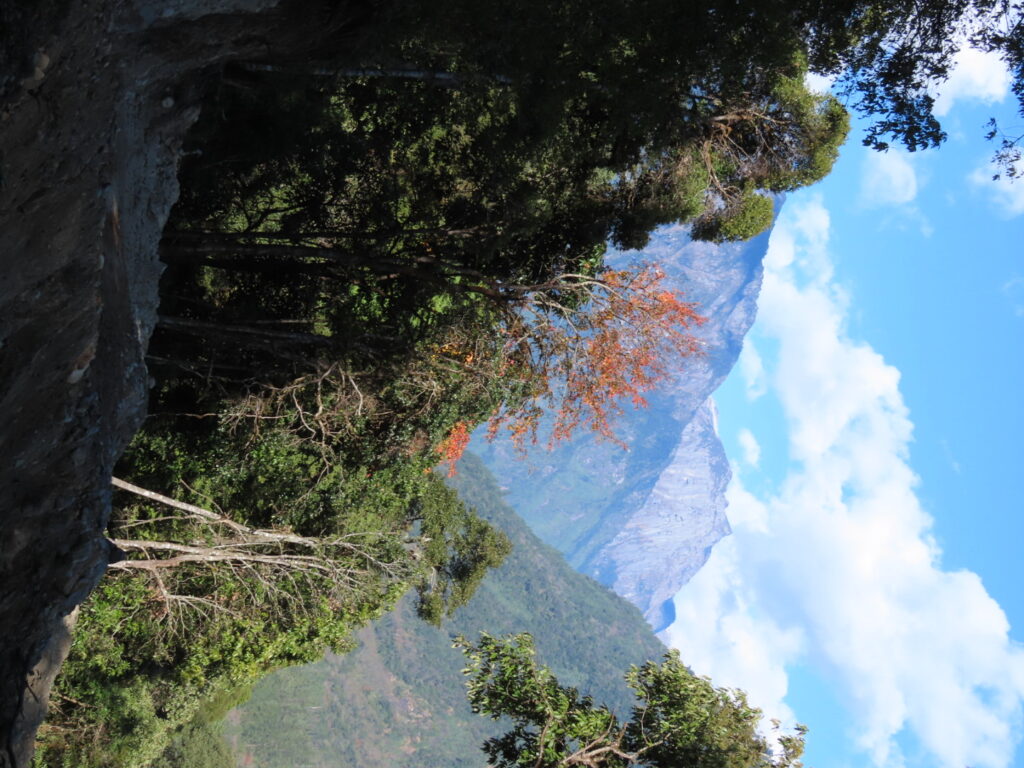
Dream Ride along the Dre
Our plan is to cycle back from Brueni to the Dree-Afra campsite. I test out the brakes (the only things that matter!) before we roll down. Off we go in the bracing cold which makes my eyes water. It is an exhilarating dream run on an excellent yet nearly deserted road. Down a narrow valley enclosed by snow-capped, thickly forested steep ranges.
Ride through- Cycling in Dehradun – The Best Routes for Leisure Rides
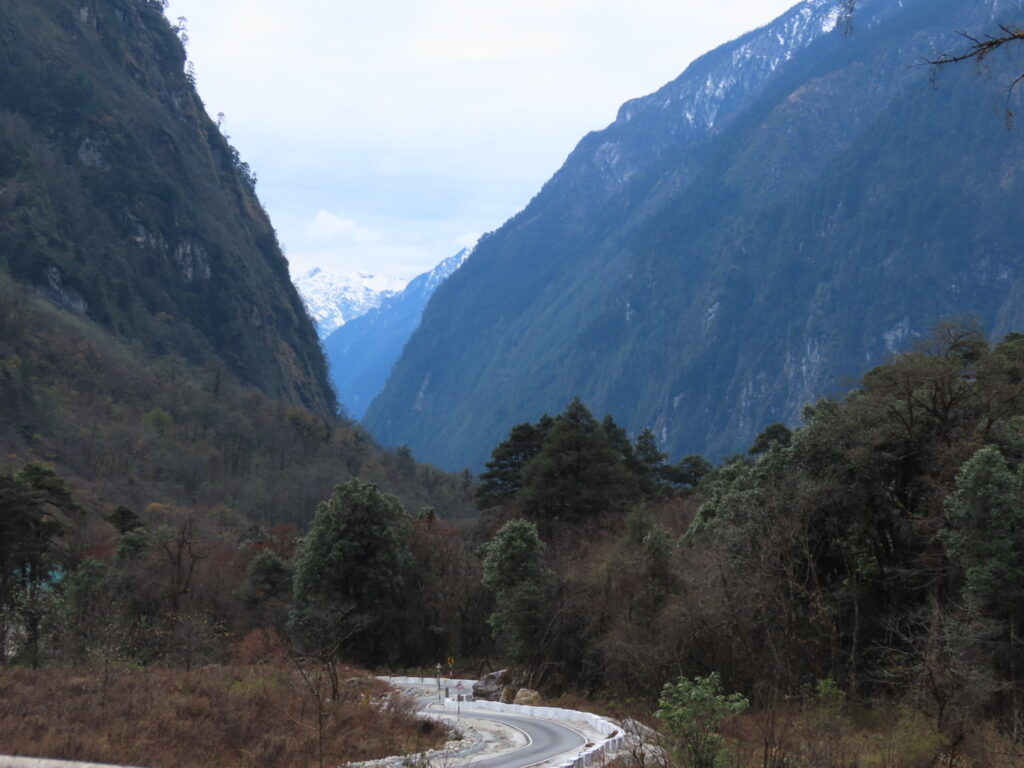
The thirty five odd kilometers end much too soon. I try to take in the fleeting scenery but one needs to keep an eye (watering and wandering!) on the road. A Mithun moves ruminatingly on a golden slope as we turn for the resort with it’s white beach for a late lunch. Still waters mirror the mountains and clouds. Redstarts quiver around on the boulders. With the light fading the cold returns with vengeance.
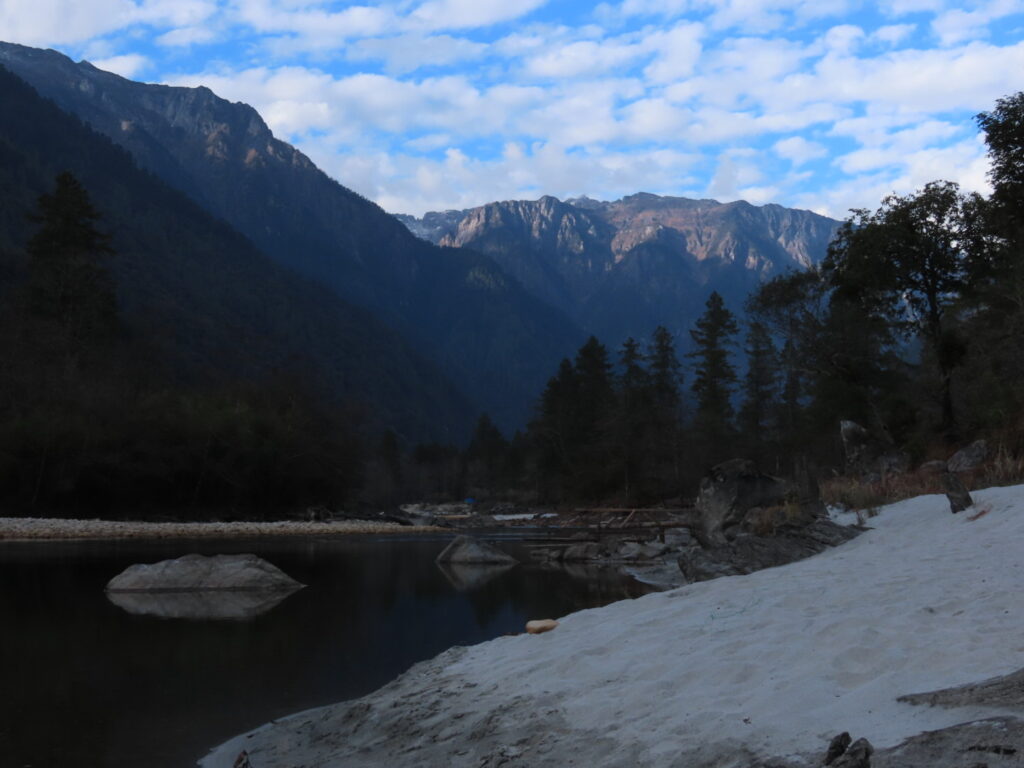
Holy Night
Back in Anini, from the heights above it, in the descending dusk, we watch a falcon hunt it’s supper before a silver full moon rising above the pink snow peaks leaves us starstruck. Being Christmas eve, we are treated to carol singing by a group of locals who with their innate musical talent and joyful fervour have us singing along soon enough albeit with a limited repertoire. Silent Night is the only suggestion I can give when asked! But what we lack in substance we make up in enthusiasm.
For more carol stories read- 3 Churches in Mhow: Discovering Obscure History and Outstanding Carols
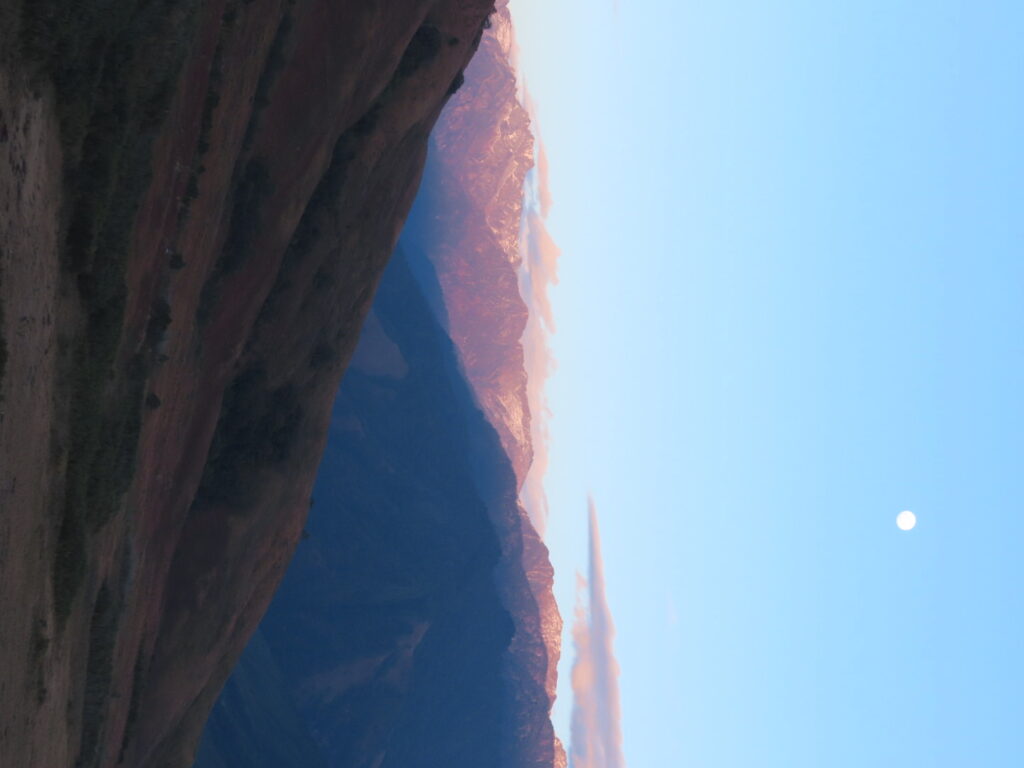
Women of the Valley
Next day while heading to Matu Fall we cross a small village of barely a dozen houses. Orange trees laden with the tiny, deliciously sweet and juicy fruit and drying vines of Kiwi plantations dot the area. The houses are a colourful lot on low stilts. We walk past a kitchen garden which looks like a miniature edible jungle, wild and organic. The path ends at a house with an open gate.
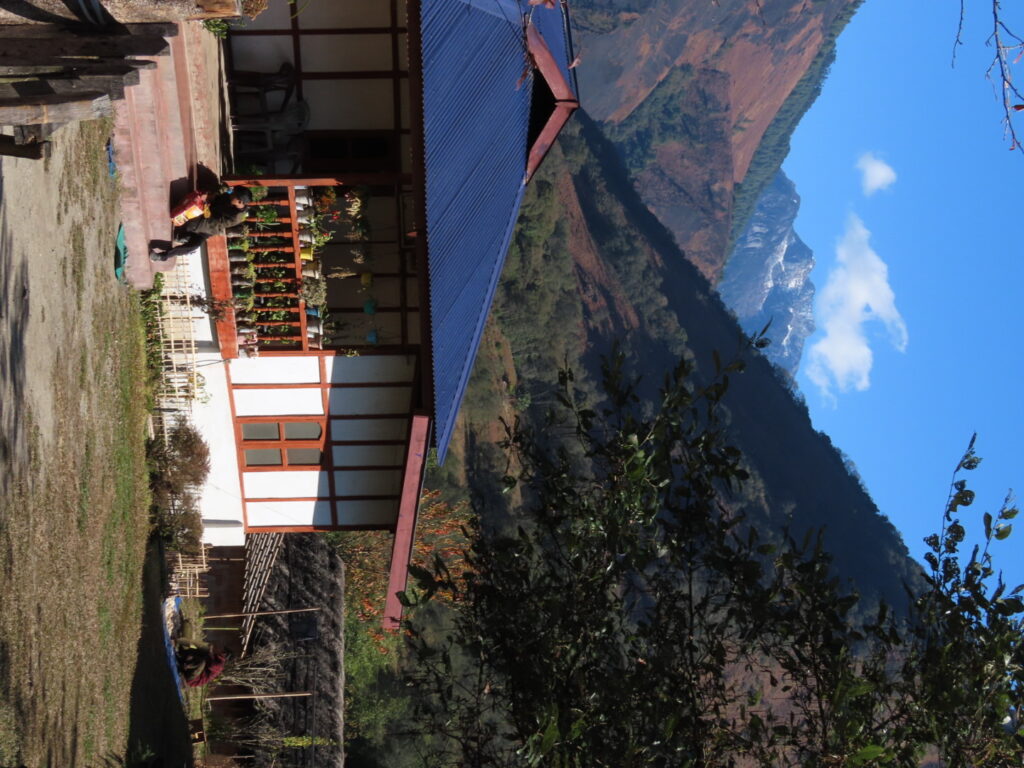
A woman is chopping a banana trunk. Breakfast for the pigs we are told by the grandson of the owners. The lady of the house is supervising and given the language barrier the grandson who studies in Anini and speaks fluent hindi translates. Her weathered smiling face begs to be photographed but she isn’t dressed up, translates the grandson. (haha..I understand!)Mithun horns line the ledge of a small traditional structure outside another house. Ahead in a steep field an old lady painstakingly clears the shrubbery. A smile is a language that needs no interpretation.
Also read- At the Darwaza of a Road Less Travelled
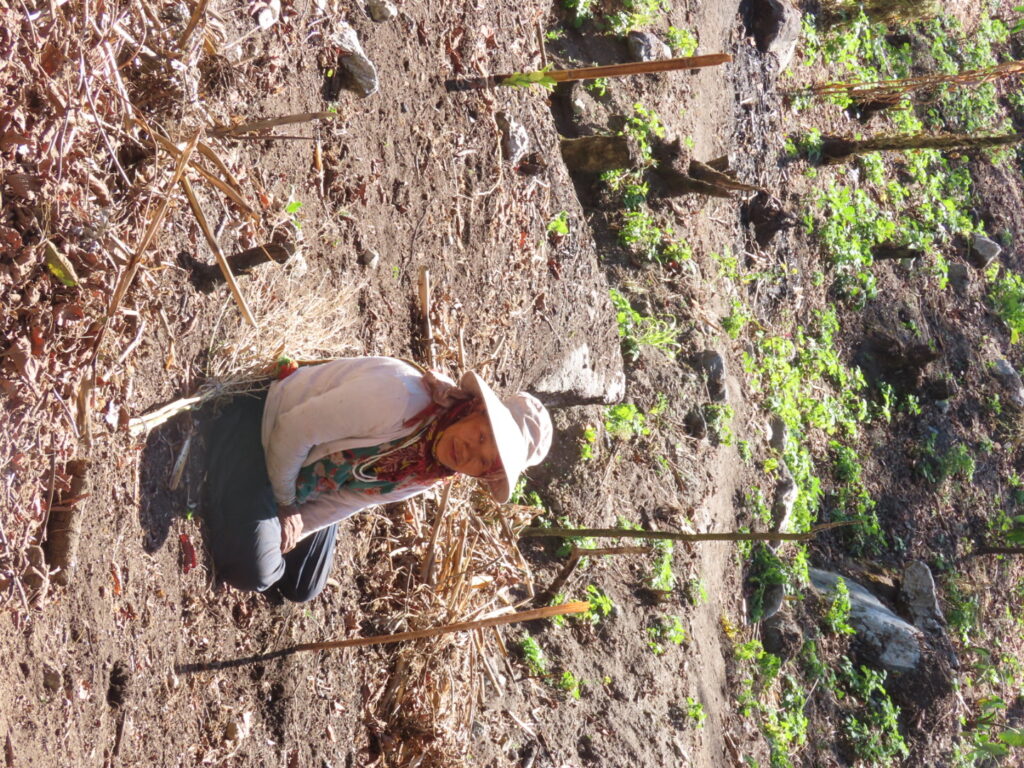
At Matu Falls a mini dam and a resort is being constructed and beyond, a new road is being cleaved from the mountain. It is a graveyard of massive massacred trees, hacked and strewn. Somewhere up in the higher reaches is the famous Seven Lake trek of Arunachal. Glacial beauties right now only accessible to the few tough and brave enough to venture into this last frontier. Somewhere I hope it stays a ‘Pemako’, famed but lost to man.
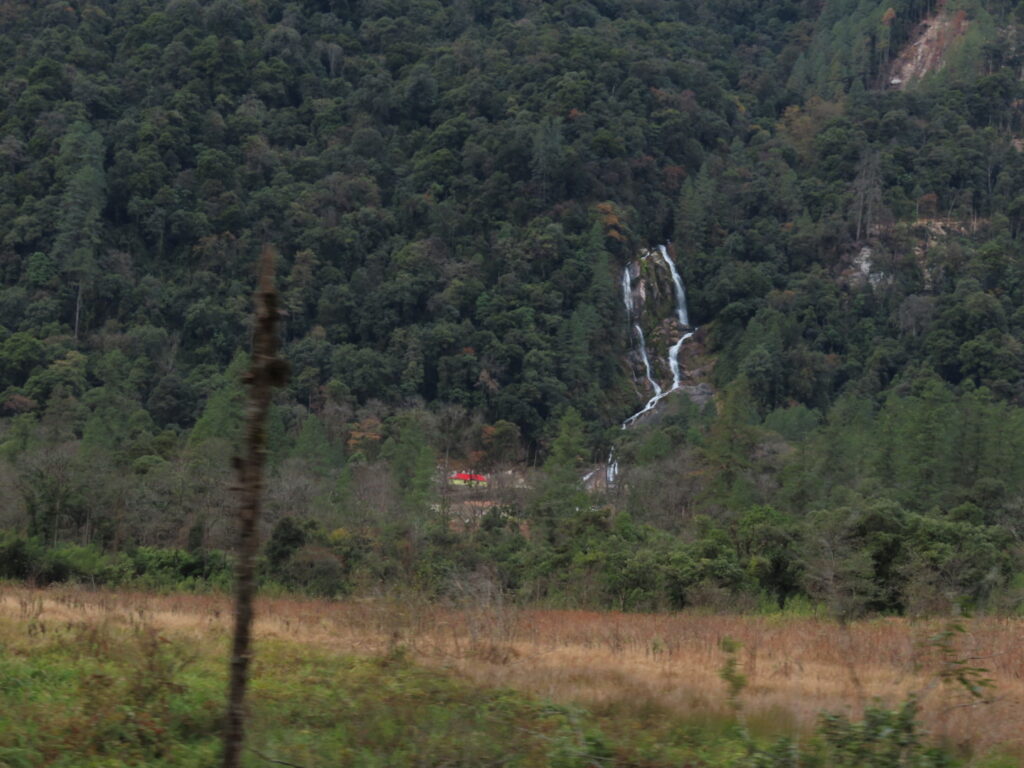
Fact File-
Getting There-Dibrugarh(376 km) is the nearest airhead. Tinsukia(326km) the nearest railhead. Then a taxi.
Staying– Dree Afra Campsite offers tents. There are a few simple homestays and hotels in Anini. The Chigu Camp is not operational.
Best Season- October to April.
